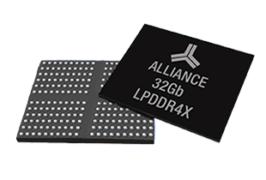NXP Semiconductors has ramped-up its TJA146x CAN signal improvement capability (CAN SIC) transceivers into Changan’s latest vehicle platform.
NXP’s CAN SIC technology enables CAN FD networks to operate in larger, more complex networks and accelerates the achievable data rates by actively improving the CAN signal. This expands the potential and flexibility of CAN FD as a cost-efficient networking technology that can meet the challenges of next-generation vehicles. Changan Automobile is the first NXP automotive customer to incorporate NXP’s CAN SIC technology in production.
Classical CAN networks have been cost-effective, robust, scalable, easy to implement, and able to support complex topologies throughout a vehicle. However, as new functions have entered the vehicle, the need for increased data exchange pushed CAN networking systems beyond their limits. CAN FD, a technology with higher bandwidth capability than classical CAN, increases bit rates from 500 kbps up to 5 Mbps.
Despite the benefits of CAN FD networks, the technology is hindered by so called “signal ringing”, that stems from signal reflection. This effectively limits the technology to 2 Mbps for many network, restricting them to highly linear topologies. As a result, wiring harnesses need to avoid long cable branches which results in more convoluted harness routes around the vehicle, adding cost and weight.
NXP’s CAN Signal Improvement technology overcomes this signal integrity issues caused by ringing by actively improving the CAN signal. As a result, OEMs can encounter more freedom in the design of their network and on the placement of ECUs. They can also take advantage of the expected associated benefits such as shorter cables, less weight, fewer connectors and easier network design. The technology also extends the performance of CAN FD to enable data rates in excess of 5 Mbps on multi-
node networks by using active signal enhancements and stricter timing. With these bandwidth improvements, CAN FD is expected to support a higher range of applications at a relatively low cost point.
“Since an early stage, Changan and NXP’s In-Vehicle Networking team cooperated on the implementation of CAN SIC in the ADAS system of Changan’s latest UNI-K model. The biggest challenge was to solve the interference problem caused by ringing,” said He Wen, Deputy General Manager of Changan Automobile Intelligent Research Institute. “Repeated simulation, testing and verification proved that the CAN SIC technology is the most effective way to solve the ringing problem. The TJA146x CAN SIC transceivers allow us to increase the flexibility of the wiring harness layout and paves the way for future upgrade to higher speeds, such as 5Mbps. From the perspective of the entire project, it greatly improved the communications quality and engineering efficiency.”
“With our CAN Signal Improvement technology, carmakers can now create cost-efficient CAN FD networks with the freedom that their vehicle networks demand,” comments Meindert van den Beld, VP and General Manager of NXP’s In Vehicle Networking Product Line. “We are delighted that Changan has embraced our TJA146x CAN SIC transceiver series for their new UNI-K model, rapidly adopting this technology into production.”
More details: The TJA146x transceiver series are available as pin-compatible replacements to existing transceivers and comply both with the existing ISO11891-2:2016 CAN FD transceiver specification, as well as the new CiA601-4 Signal Improvement standard, making them easy to adopt and backward compatible with standard CAN transceivers. Learn more about NXP’s CAN SIC solutions at www.nxp.com/CANSignalImprovement
Company: NXP Semiconductors










